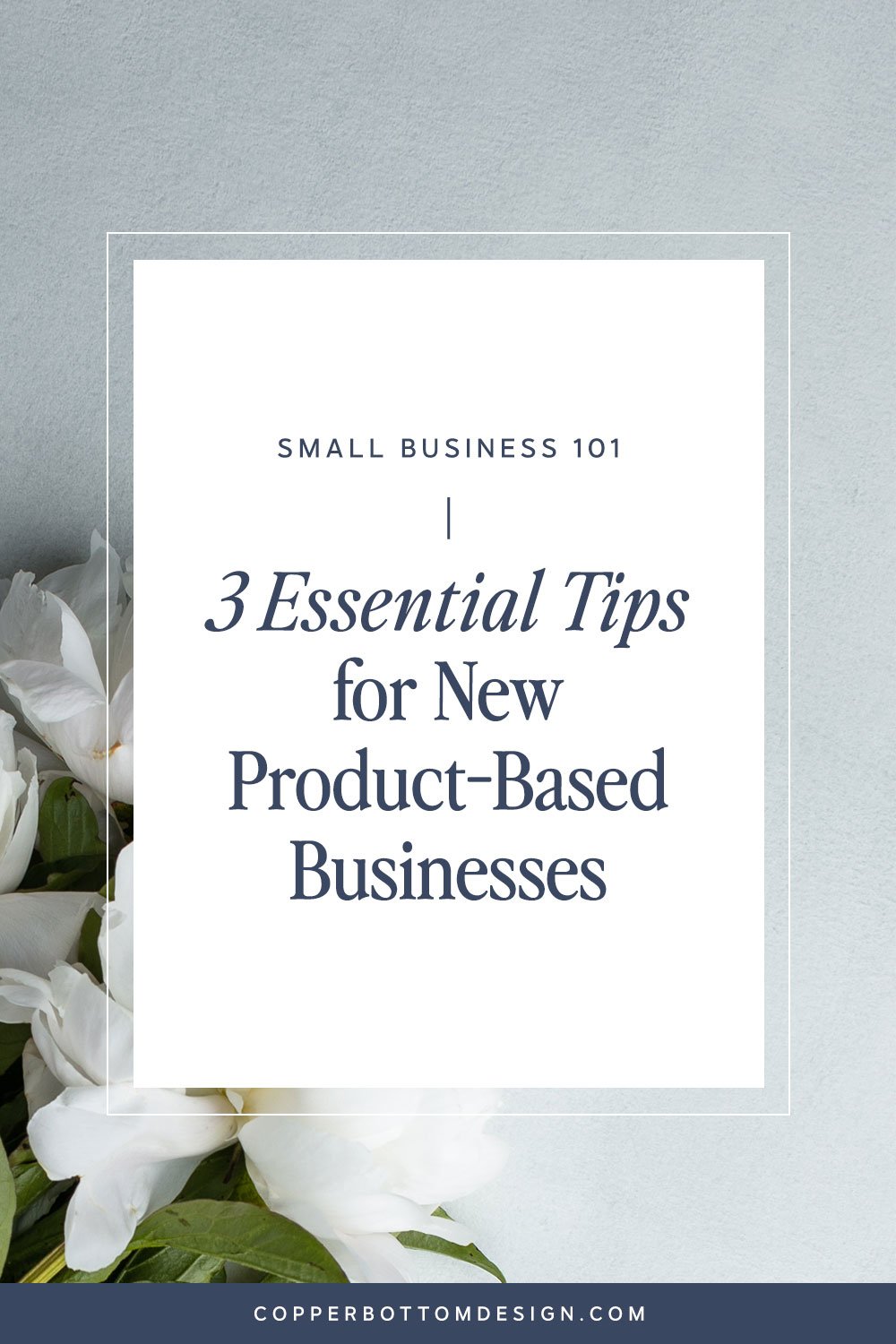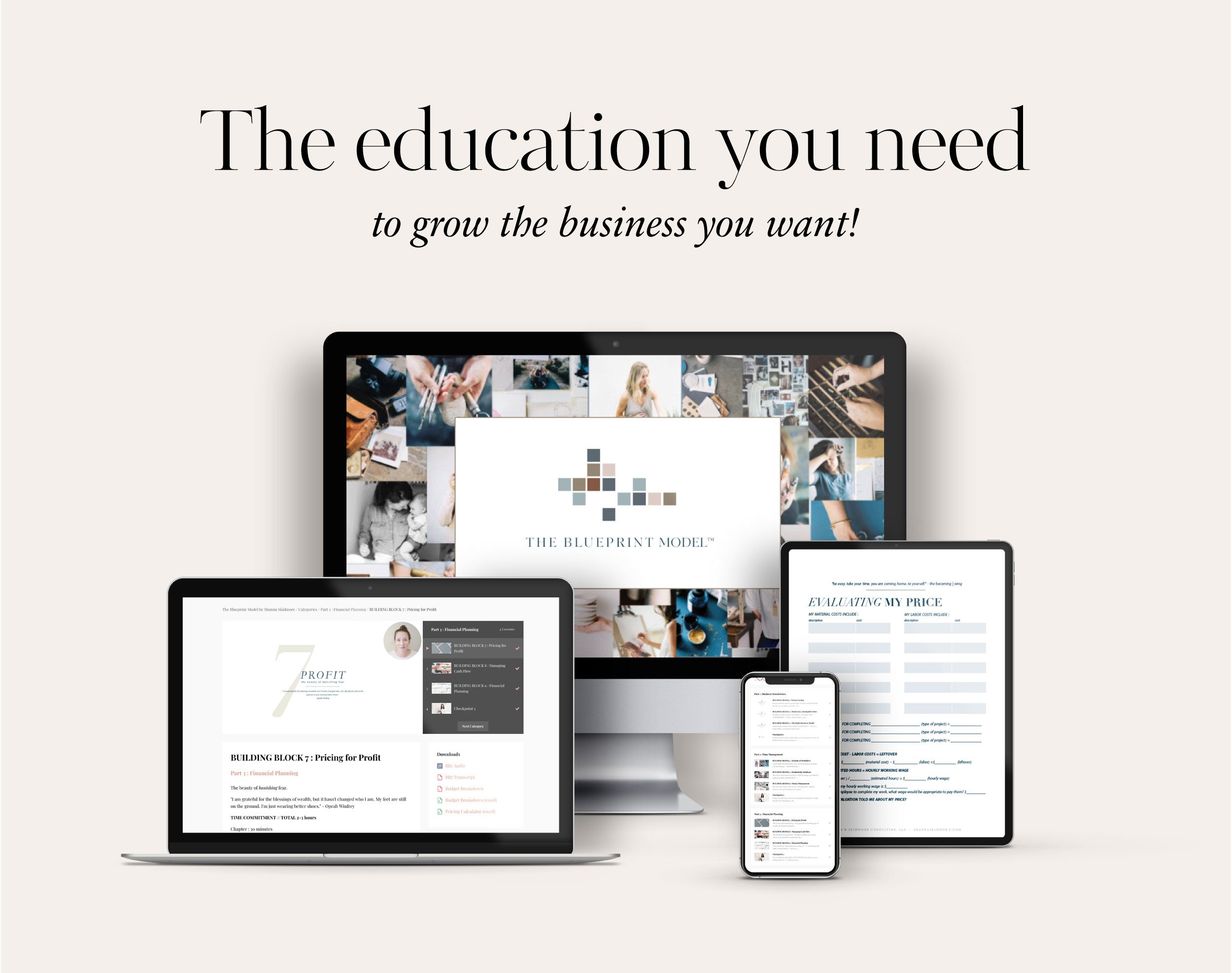Three Essential Tips for New Product-Based Businesses
If you’re thinking about starting a product-based business or want to move into the product space in your existing business, this post is for you.
I’ve been in the planner business since 2004, and throughout that time, I’ve learned a lot along the way . . . including what to do and what NOT to do.
And in that time, I’ve seen some of the same mistakes pop up again and again by new companies just starting out.
Below, I’m sharing three essential tips to set up your new product-based business on the path to success from day one.
01. PLAN AHEAD
Your products are a reflection of your brand and, ultimately, you. I cannot stress this enough: take the time to do it right the first time. It’s number one on this list for a reason.
I see the quote “done is better than perfect” floating around Instagram a lot these days, and it makes my perfectionist skin crawl. It’s true that that sometimes you just need to get to a point of completion when it comes to writing your product descriptions, line sheet, or email newsletter . . . but rushing a custom product to market will almost always have poor results—especially a planner.
For example, it’s imperative that the design, construction, and materials are the best reflection of your brand—something that fits seamlessly into your product line and the vision you have for your brand going forward. This takes time. Manufacturing a planner in China will take about six months from start to finish, and much of this time is spent sampling materials to find the perfect fit. Plan ahead so you don’t have to settle for a subpar end product when all is said and done.
Stretching your timelines can also result in a shorter selling season—and with dated products, that is a risky move. You should give yourself at least three months to sell your planners before their start date. If you will not have your planners available to sell by May, for academic year planners, or September, for calendar year planners, that’s a sign to pump the brakes. There are strategies to implement should you find yourself in this situation, but it’s best to avoid it altogether.
It’s a hard pill to swallow, I know. If you’re not ready now, you’ll have to wait an entire year to try to launch your planner again. But manufacturing planners is no small task, and it’s expensive. I caution you to spend that much money on a product that, literally or figuratively, misses the boat.
02. BUILD YOUR AUDIENCE FIRST
If you’re brand new to business, chances are you don’t have a huge following, or perhaps no following at all. This is completely normal—you’re new, and we all have to start somewhere.
But it’s very important to start building your following before your planner launch. If you wait until the week before launch day, you’ll be actively selling to your audience on their first point of contact. This can come across as spammy. Customers hate being sold to, and if all you’re doing is asking them to buy from you, they’ll be more likely to tune you out. (source)
Make an intentional effort to start sharing about your brand and connecting with your audience online from day one.
While you’re in the product development and production phase of business, start blogging, become active on social media, and engage with your ideal customer. Use this time to woo them so they are ready to buy your products on launch day.
03. TRUST YOUR GUT
We all know we should trust our gut when it comes to big decisions. It’s great advice in life and in business. But as business owners, we are often told that we need to take a massive leap of faith in order to move forward.
While I find that to be true in some cases, I also believe it’s vitally important to listen to your instincts. A leap of faith can be a wonderful thing . . . if you feel good about it. But a leap of faith isn’t foolproof, and it can certainly lead you astray in some instances.
If you’re hesitating on making a big decision or get that “spidey sense” about a new vendor, for instance, it’s perfectly ok to walk away. More often than not, you’ll be better off in the long run for following these instincts.
Manufacturing custom planners—or any custom product, for that matter—is no small task. In order to see the best return on your investment of time and money, slow down, build strong relationships, and trust your gut along the way.
Get smart about your business finances from day one!
From pricing, to budgeting, to taxes, to setting up your bank accounts — The Blueprint Model is a complete financial system to help you understand your business numbers with ease!


